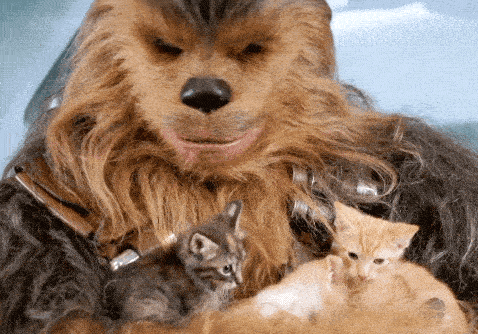Either a Wookiee is hanging out in your house when you aren’t home, or you’re beginning to see the first signs of pet shedding season. Either way, it’s time to arm yourself with lint rollers, charge up the vacuum robot, and prepare to do battle with your brushes of choice at the ready. But which tools are best? And why do pets shed so much in the spring anyway?
 Why All the Springtime Shedding?
Why All the Springtime Shedding?Science. You’ll notice seasonal shedding more with some breeds of dogs and cats than others. For example, a German shepherd, with it’s thicker undercoat, will have more hair to shed as winter departs than a boxer who doesn’t even grow an undercoat. This makes it tempting to assume that the shedding is due to warmth. As temperatures increase, the shepherd gets toasty and starts to blow its coat, right? Yes, but that’s only part of the story.
Organisms from cats to cyanobacteria have a circadian rhythm. This is a physiological cycle that centers around external factors such as temperature and light. Light is a huge factor as it affects everything from sleep-wake cycles to the growth of new leaves on trees each spring. As the days get longer, our pets’ bodies begin to get the cue from the sun that they don’t need their winter coats anymore. Yes, even your couch potato—who isn’t exactly roaming the outdoors like a wild creature in full sun—is still getting the message. Is it any wonder that our pets love to find the sunniest spot in front of a window for their naps? They are wired for it!
Don’t underestimate the importance of good grooming habits for your pets. The benefits of making this part of your regular schedule extend beyond the hair on your recliner. This is the perfect time to support your bond with your pet and also to really get your hands all over him or her. This functions as an exam of sorts, keeping you aware of any lumps, bumps, injuries, etc. that might easily go unnoticed. This is often how the first signs of potential health problems are found and then reported to vets!
For long-haired pets, frequent, regular brushing is an absolute must. Neglecting to do so will often result in matted fur which comes with a whole other set of problems ranging from pain to skin infections that just get worse and worse. This is especially common in older pets who aren’t as limber and enthusiastic in their grooming as they were once able to be. For cats, in particular, brushing helps to prevent hairballs, too.
Not any old brush will do. For dogs with undercoats, you will need a brush that is specifically designed to remove loose undercoat hair. The Furminator is a popular example of one. These brushes will definitely make your home brush-outs more effective.
For cats, probably the most important thing to do is to find out what your cat enjoys most. Some like certain kinds or sizes of brushes more than others. And whether or not your cat will let you groom it’s belly is totally up to the individual cat…you know what we’re talking about if you have cats! If you have a long-haired cat, definitely invest the time in grooming.
Professional groomers are one of the best tools you have. They are fast and efficient at bathing, shaving, removing matted hair, and veterinary practices can even offer sedation grooming when needed.
Never, ever use scissors to try to cut out mats. You’d be surprised how often and easily this turns into an accident that requires sutures. The same can be said for shaving, especially with cats who tend to have loose, delicate skin. For safety reasons, it’s best to leave these more intensive needs to the pros.